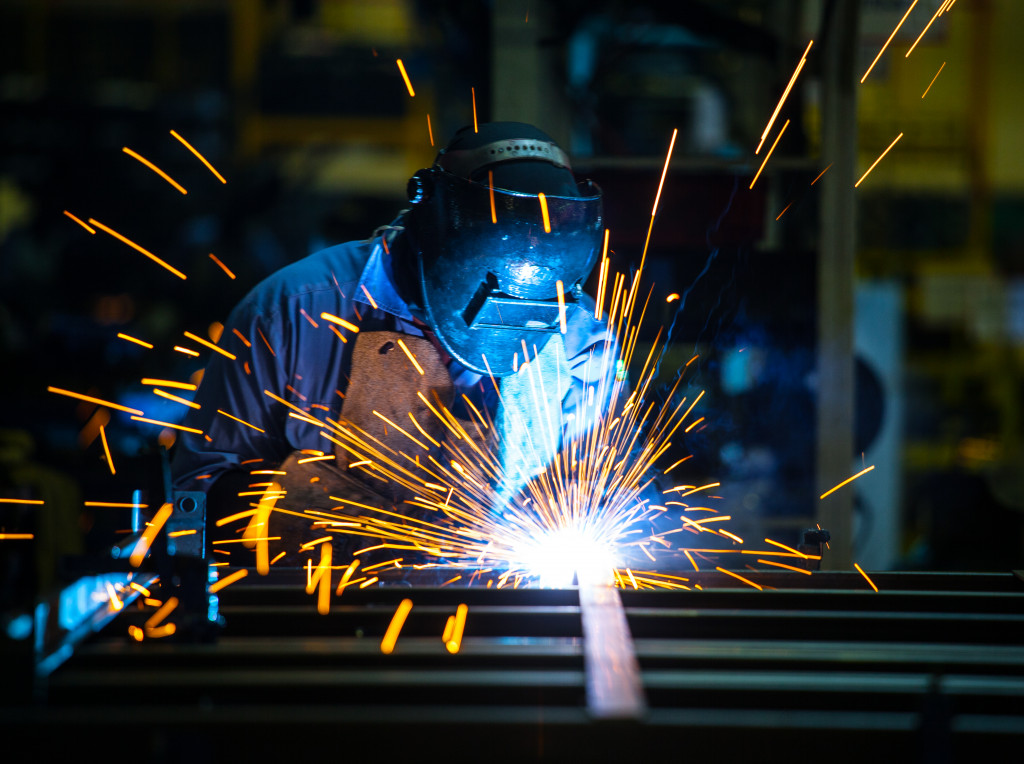- Companies focusing on continuous improvement initiatives have an average 7% higher customer satisfaction rate.
- Automated machinery for material fabrication can increase precision, speed up production cycles, and reduce safety risks and materials waste.
- An ERP system provides visibility into the entire supply chain, helping manufacturers adjust their inventory levels according to demand and prevent stockouts.
- Online technology such as Artificial Intelligence (AI) and Augmented Reality (AR) can predict customer demand, optimize production lines, collaborate more effectively across departments, store data in the cloud, and detect potential issues before they become significant.
Manufacturing is a critical part of the global economy, and efficiency is essential for success. As technology advances and processes become more streamlined, manufacturers can gain a competitive edge if they can invest in the necessary resources to increase efficiency. This can help them reduce costs, increase production speed, and improve product quality.
One of the most important benefits of investing in efficiency is that it helps to save time and money. A study by the American Council for an Energy-Efficient Economy found that businesses could save between 1-2% of their total operational costs per year by investing in energy-efficient systems. For more prominent manufacturers, this could mean millions of dollars saved annually. Additionally, increasing efficiency helps reduce waste and pollution and reduce material costs.
Furthermore, improving efficiency can lead to improved customer service and satisfaction. By reducing wait times for deliveries or speeding up production cycles, manufacturers can provide their customers with a better experience overall. According to the Boston Consulting Group, companies that focus on continuous improvement initiatives achieved an average of 7% higher customer satisfaction than those that don’t emphasize these improvements.
Efficiency is critical in manufacturing. Getting there might take some investment, but the potential rewards can be tremendous. Businesses prioritizing efficiency will typically reap multiple benefits and gain a significant advantage over their competitors. Here are a few areas to prioritize when you want to make your manufacturing process efficient.
Material Fabrication

Manually fabricating materials needed in manufacturing has disadvantages, mainly due to the time and labor required. This can significantly increase operational costs, slower production cycles, and lower quality products. Additionally, manually fabricating materials can be more prone to human errors, leading to an increased risk of safety issues on the production line.
Many manufacturers have turned to automated machines for material fabrication to overcome these drawbacks. Automatic machines are capable of producing materials with greater precision and accuracy than manual labor ever could. They also provide a faster production cycle and decreased operational costs since they can do their job more quickly and efficiently. Moreover, automated machines improve product quality by ensuring consistent results every time.
In addition, robotic machinery increases safety on the production line by eliminating human errors that can result in accidents or injuries on the job. Automated machines can also reduce material waste due to their ability to produce exact cuts and shapes each time. Finally, mechanical systems generally require less maintenance than manually operated tools and machines, saving even more money for companies looking for better efficiency in the long run.
Overall, investing in automated machinery for material fabrication is an effective way for manufacturers to improve efficiency while decreasing operational costs and increasing product quality. You can partner with metal stamping services for the fabrication needs of your industrial components. This can help you ensure that your products are produced quickly, accurately, and cost-effectively.
Inventory Management
Maintaining proper inventory levels is essential to achieving efficient manufacturing processes. If a manufacturer has too much or too little inventory, it can cause delays in production cycles and increased costs associated with storing the excess material. Many manufacturers have turned to Enterprise Resource Planning (ERP) systems to manage their inventories effectively.
ERP systems give manufacturers visibility into their entire supply chain and make it easier for them to adjust their inventory levels according to demand. They also enable companies to analyze customer data and identify trends affecting future orders. With ERP systems, manufacturers can reduce stockouts and overstocks and prevent the associated costs.
ERP systems also help to improve communication between different departments of a business, eliminating miscommunication that could lead to errors in inventory management. They provide real-time data on product availability, enabling companies to adjust their production schedule as needed. The integrated system also gives manufacturers complete visibility into their operations so they can make informed decisions about inventory levels and forecast future needs more accurately.
Online Advancements

Online technology is quickly becoming a vital component of the manufacturing industry. As manufacturers strive for efficiency and cost-effectiveness, online technology can provide them with both.
Online tools also help to improve communication between departments within an organization and make it easier for teams to collaborate on projects. This reduces miscommunication that could lead to delays or mistakes in the production process. Online solutions also enable companies to track customer orders more accurately and forecast future demand more accurately than before. Finally, modern online technology enables companies to manage communications with suppliers more effectively, helping them ensure timely deliveries of materials and parts needed for production.
Examples of how modern online technology is being used in manufacturing include the following:
Artificial intelligence
AI has been used for a variety of tasks in manufacturing, from predicting customer demand to optimizing production lines. AI-powered systems can analyze large amounts of data quickly and accurately, helping manufacturers make better decisions faster than ever before.
Augmented reality
AR technology has created virtual simulations that enable teams to troubleshoot issues with the production line without disrupting operations.
Cloud computing
Manufacturers have begun using cloud-based services to store and manage their data. This helps them reduce infrastructure costs and streamline communication processes across departments.
Preventive maintenance diagnostics
Manufacturers are now using predictive analytics to analyze data from their production lines and detect potential problems before they become significant issues. This enables them to stay ahead of any breakdowns or unexpected downtime, saving money and increasing productivity in the long run.
Final Thoughts
Manufacturing processes need to be efficient and cost-effective if they’re going to stay competitive in the global economy. Investing in modern technology, such as automated machinery and cloud-based services, can help manufacturers reduce costs and increase production speed. An effective inventory management system can also help them manage their resources more efficiently. By taking advantage of these advancements, businesses can take their manufacturing operations to the next level of efficiency.

